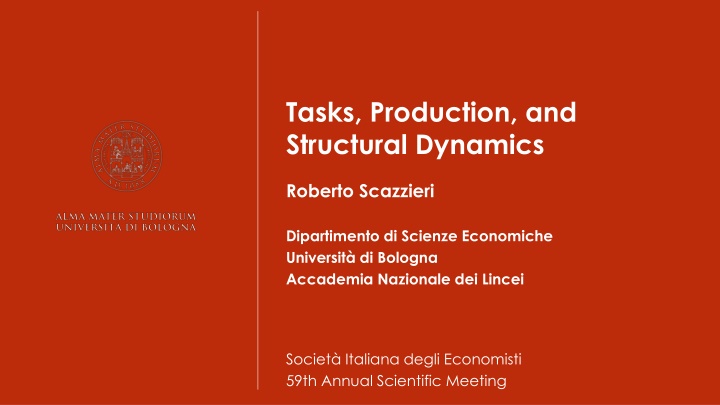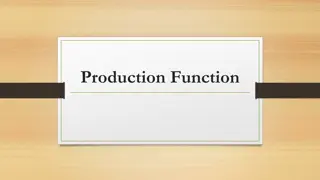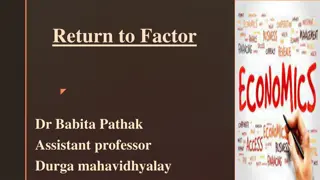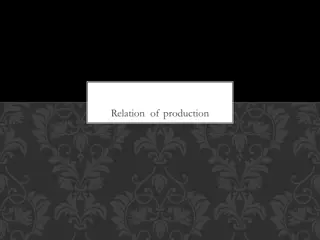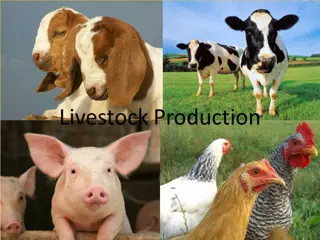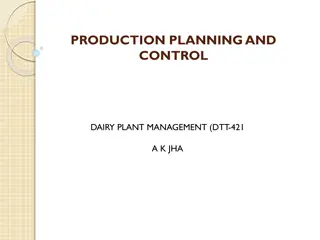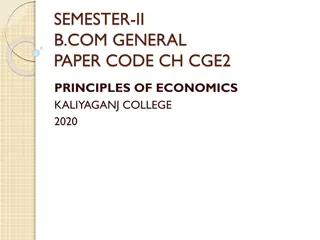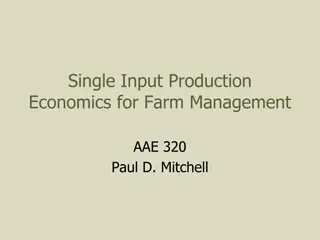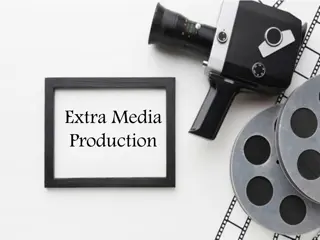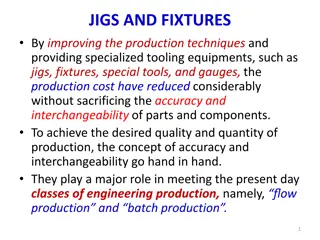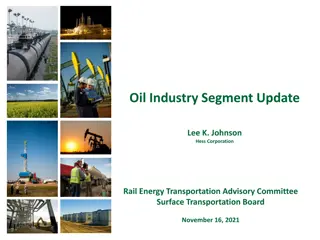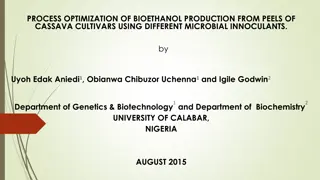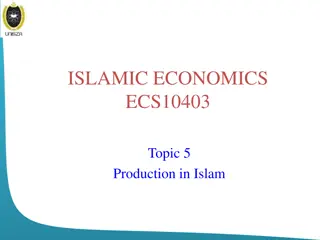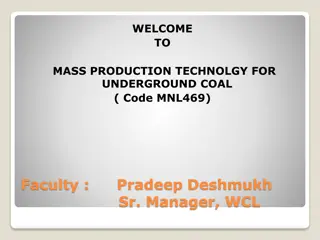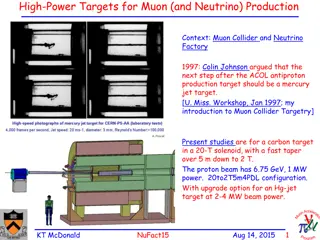Tasks, Production, and
Uncover the intricate relationship between tasks, production elements, and structural dynamics in the realm of economic analysis and engineering science. Delve into the missing object in production processes and explore the prescriptive nature of production theories for enhanced performance.
Download Presentation

Please find below an Image/Link to download the presentation.
The content on the website is provided AS IS for your information and personal use only. It may not be sold, licensed, or shared on other websites without obtaining consent from the author.If you encounter any issues during the download, it is possible that the publisher has removed the file from their server.
You are allowed to download the files provided on this website for personal or commercial use, subject to the condition that they are used lawfully. All files are the property of their respective owners.
The content on the website is provided AS IS for your information and personal use only. It may not be sold, licensed, or shared on other websites without obtaining consent from the author.
E N D
Presentation Transcript
Tasks, Production, and Structural Dynamics Roberto Scazzieri Dipartimento di Scienze Economiche Universit di Bologna Accademia Nazionale dei Lincei Societ Italiana degli Economisti 59th Annual Scientific Meeting
Introduction and contents 1. Production: a missing object? 2. The process view of production 3. Elements of production: tasks, agents and transformations 4. Dynamics of production: sequentiality and boundedness 5. From production processes to the production system 6. The production system as complex system 7. A first approach to system building in the production domain: the Quesnay heritage 8. From the horizontal to the vertical approach and back 9. Production coordination as multi-level interdependence: Babbage principles 10. Production systems and structural dynamics 11. Structural dynamics: a multi-dimensional process 12. Production dynamics and structural dynamics: policy alignment challenges
Production: a missing object? EconomicAnalysis What, then, is the problem of the undertaker? By hypothesis he is dealing with limited resources, and in applying these resources he must draw commodities, services, and privileges out of the circle of exchange, and so combine and direct them as to produce a result, that can itself be returned into the circle of exchange with a value higher than that of the factors or ingredients that were drawn out (Wicksteed, 1933 [1910], Chapter IX, paragraph 14) In the study of production, when one abstracts from legal forms of organization [ ] and types of activity.. One obtains the concept of a producer, i.e., an economic agent whose role is to choose (and carry out) a production plan [ ] For a producer, say the jth one, a production plan [ ] is a specification of the quantities of all his inputs and all his outputs; outputs are represented by positive numbers, inputs by negative numbers. With this convention a production plan, or more briefly a production, is represented by a point yiof Rl, the commodity space (Debreu, 1959, pp. 37-38) Economists have long treated technological phenomena as events transpiring inside a black box. They have of course recognized that these events have significant economic consequences [...] Nevertheless, the economics profession has adhered rather strictly to a self-imposed ordinance not to inquire too seriously into what transpires inside that box (Rosenberg, 1982, p. vii)
Production: a missing object? Engineering science The primary characteristic of a theory of production is that it should be prescriptive: it should reveal how action contributes to the goals set to production. On the most general level, there are three possible actions: design of the production system; control of the production system in order to realize the production intended; improvement of the production system [ ] the application of the theory should lead to improved performance. In reverse, the lack of the application of the theory should result in inferior performance. Here is the power and significance of a theory from a practical point of view: it provides an ultimate benchmark for practice (Koskela, 1999, p. 1) There is presently no science of manufacturing [ ] Rather, production has been seen as the task of applying existing technology in a systematic way (Koskela, 1992, p. 11)
Production: a missing object? Management science In management as in engineering, we can expect that the interconnections and interactions between the components of the system will often be more important than the separate components themselves (Forrester, 1961, p. 6) I was writing things about systems optimum prevailing over clusters of local optimums This appeared in my first production book: Opt (S1+ S2+ +Sn) (Opt S1+Opt S2+ +Opt Sn). This equation means that the optimum of the system taken as a whole is equal or greater than the sum of the optimums of the individual subsystems that comprise the whole system (Starr, in Sprague, 2007, p.234) Knowledge that is actually implemented is much more likely to be acquired from learning by doing than form learning by reading, listening, or even thinking [ ] One of our main recommendations is to engage more frequently in thoughtful action [ ] Taking action will generate one (Pfeffer and Sutton, 1999, p.1, added emphasis)
The process view of production Objects and processes: Two descriptions are required for an actual entity: (a) one which is analytical of its potentiality for objectification in the becoming of other actual entities, and (b) another which is analytical of the process which constitutes its own becoming [ ] That how an actual entity becomes constitutes what that actual entity is, so that the two descriptions of an actual entity are not independent (Whitehead, 1978 [1929], p. 23) Production: The process by which human or non-human activities bring forward /bring into existence certain objects, structures, states of the world The production process: The productive activities carried out within any given productive unit consist of arrangements of tasks over time. Such arrangements may be represented as task networks having terminal nodes, or sinks. We shall call an elementary process (e.p.) any time arrangement of tasks operated between two consecutive terminal nodes of the same task network [ ] A production process [ ] is the arrangement of e.p. s operated within a productive unit during the working day (Scazzieri, 1993, p. 86) Production in process theory: Process theory combines what we know about the three core activities in operations management: to design, measure and improve the conversion of inputs into outputs [ ] At its most basic, a process is the sequence of activities that turn inputs or resources into outputs (products or services) [ ] The conversion that takes place is the actual transformative process within the firm. Here the inventory of materials and components turns to work-in-process (or work-in-progress) inventory as it moves from process to process until it is complete (Holweg et al., 2018, pp. 31-34)
Elements of production: tasks, agents and transformations Tasks: A completed operation usually performed on some particular object in view of a particular productive purpose or set of purposes (specialized vs. versatile tasks) Agents: Human, machines, biological catalysts performing a particular task or set of tasks in a production process Transformations: The conversion processes leading from one state of the world to another as a result of tasks performed by agents
Dynamics of production: sequentiality and boundedness Sequentiality: At whatever point we cut through a [production] process, the relationship between two points (or stages ) of that process is unidirectional. A switching in time of these stages, that is, a change in the sequential ordering of these stages will not be possible unless the identity of a process is changed (Landesmann and Scazzieri, 1996,p. 192) Boundedness: [T]he analytical description [of a production process] must always include the specification of an initial and a final stage (Landesmann and Scazzieri, 1996, p. 193)
From production processes to the production system Complexity: by a complex system I mean one made up of a large number of parts that interact in a nonsimple way. In such systems, the whole is more than the sum of the parts, not in an ultimate, metaphysical sense, but in the important pragmatic sense that, given the properties of the parts and the laws of their interaction, it is not a trivial matter to infer the properties of the whole (Simon, 1962, p. 468) Near decomposability: At least some kinds of hierarchic systems can be approximated successfully as nearly decomposable systems. The main theoretical findings from the approach can be summed up in two propositions:(a) in a nearly decomposable system, the short- run behavior of each of the component subsystems is approximately independent of the short-run be- havior of the other components; (b) in the long run, the behavior of any one of the components depends in only an aggregate way on the behavior of the other component (Simon, 1962, p. 474)
The production system as complex system Interdependence between tasks Interdependence between agents agent subsystem Interdependence between transformations Interdependence across tasks, agents and transformations task subsystem transformation subsystem which architecture for the production system? (See alsoAyres, 1988, Scazzieri, 1993)
The production system as complex system Form of productive organization: the coordination mode within and across the task subsystem, the agent subsystem and the transformation subsystem (in manufacturing activity, this would be a manufacturing regime) Levels of aggregation: task subsystems, agent subsystems and transformation subsystems may develop at different levels of aggregation (for example at the level of individual establishments, industrial sectors, or integrated economic systems) Coordination modes: they are not necessarily consistent across subsystems and across levels of aggregation
A first approach to system building in the production domain: the Quesnay heritage Material transformations, product flows, and interdependence: Horizontal approach: circular economies viability condition (Hawkins-Simon) Vertical approach: vertical economies macroeconomic condition (Pasinetti) From the horizontal to the vertical approach and back: l (I - A)-1= v = [vi] i = 1 , , k A (I - A) -1 = H = [hi] i = 1, , k
From the horizontal to the vertical approach and back l (I - A)-1= v = [vi] i = 1 , , k A (I - A) -1 = H = [hi] i = 1, , k Each vertically integrated sector i is represented by a pair (vi,hi). Each vi expresses in as consolidated way the quantity of labour directly and indirectly required in the whole economic system to obtain one physical unit of commodity i as a final good (Pasinetti, 1980 [1973], p. 20). Each vector hi expresses in a consolidated way the series of heterogeneous physical quantities of commodities 1, 2, , m, which are directly and indirectly required as stock, in the whole economic system, in order to obtain one physical unit of commodity i as a final good (i = 1, 2, , m). This is [a] particular composite commodity, which we shall call a unity of vertically integrated productive capacity for commodity i (i = 1, 2, , m) (Pasinetti, 1980 [1973], pp. 20-21)
Production co-ordination as multi-level interdependence: Babbage principles Division of labour in manufacturing: [T]he master manufacturer, by dividing the work to be executed into different processes, each requiring different degrees of skill or of force, can purchase exactly that precise quantity of both which is necessary for each process; whereas, if the whole work were executed by one workman, that person must possess sufficient skill to perform the most difficult, and sufficient strength to execute the most laborious, of the operations into which that art is divided (Babbage, 1835, pp. 175 176). Law of multiples: [w]hen the number of processes into which it is most advantageous to divide [the production process], and the number of individuals to be employed in it, are ascertained, then all factories which do not employ a direct multiple of this latter number, will produce the article at a greater cost (Babbage, 1835, p. 211; see also Scazzieri 2014).
Production co-ordination as multi-level interdependence: Babbage principles (i) Babbage principles highlight conditions of interdependence between different subsystems of production elements (that is, between tasks, agents, and transformations) (ii) Babbage principles highlight conditions of interdependence across different levels of aggregation of productive units (that is, across the establishment, network, industrial sector, and systemic level) (iii) Babbage principles may be used as industrial heuristics for co-ordination prerequisites between production elements and across different levels of aggregation in the production system (Scazzieri, 2014)
Production systems and structural dynamics (i) A change in the proportionality condition governing the interdependence between product flows (Lowe, 1976, Pasinetti, 1981, Quadrio Curzio, 1986) (ii) A change in the proportionality condition governing the interdependence between tasks and the interdependence between agents (iii) A change in the proportionality condition governing the interdependence between different levels of aggregation in the production system (iii) A change in the hierarchy of motions between the different elements of production. (For example, an increase in the quantity of A produced in the economy may presuppose an increase in the quantity of B before structural change but may be independent of it after structural change if the order of sequence between interlocking stages of production has changed)
Structural dynamics: a multi-dimensional process (i) Structural dynamics involves a change in the mode of interdependence and coordination between all elements of production (tasks, agents, transformations) (ii) Structural dynamics involves a change in the mode of interdependence and coordination across the different levels of aggregation in the production system (individual establishments, networks of establishments, industrial sectors, national and cross-national aggregates of production activities) (iii) Proportionality conditions determine the range within which the proportions between production elements (tasks, agents, and transformations) may change subject to coordination requirements for a working production economy. (iv) Proportionality conditions determine the range within which the proportions between producution elements across different levels of aggregation may change subject to coordination requirements for a working production economy.
Structural dynamics: a multi-dimensional process (v) Structural dynamics involves changes that may take place at different speeds depending on which elements of production we consider. For example: a high speed of change at the level of tasks may be thwarted by a slow speed of change along transformation lines, or a high speed of change along transformation lines may be thwarted by sluggish change of task definition and performance (as when product innovation moves faster than process innovation) (vi) Structural dynamics involves proportionality conditions of a different type depending on which aggregation criterion is adopted. For example, aggregation by industries highlights interdependencies between intermediate product flows and draws attention to the viability condition for co-ordination. On the other hand, aggregation by vertically integrated sectors highlights sequential dependencies between fabrication stages along the same transformation line, and draws attention to in-process coordination requirements (time synchronisation of fabrication stages along the same transformation line) and to cross-process coordination requirements (macroeconomic coordination across different vertically integrated sectors)
Production dynamics and structural dynamics: policy alignment challenges (i) Misalignment between the type and speed of structural changes is to be expected both across elements of production and across levels of aggregation (ii) The relevant level of aggregation may be different depending on which elements of production are considered. This has significant implications for coordination requirements. For example, the fabrication stages of a given process may be concentrated in the same location while the agents involved in that process may belong to different locations (iii) The correction of misalignment between type and speed of structural changes may be sought through policies aimed at realignment in view of the relevant proportionality conditions (iv) Re-alignment policies may vary depending on whether we consider tasks, agents or transformations; they may also vary depending on the level of aggregation (v) Target-specific re-alignment policies highlight that the policy alignment of target-specific measures cannot be taken for granted structural dynamics draws attention to the differentiated (target-specific) policy tools that may be needed to address the coordination of different elements of production at different levels of aggregation, as well as to the coordination requirements needed to make the corresponding policy measures mutually consistent.
References Ayres, R. U. (1988) Complexity, Reliability, and Design: Manufacturing Implications , Manufacturing Review, Vol. 1, Nr 1, March 1988, pp. 26 - 35. Babbage, C. (1835) On the Economy of Machinery and Manufactures, 4th edn, London, Charles Knight. Debreu, G. (1959) The Theory of Value, New York, John Wiley. Forrester, J.W. (1961) Industrial Dynamics, Cambridge, Massachusetts, The MIT Press. Holweg, M, Davies, J., De Meyer, A., Lawson, B. and Schmenner, R.W. (2018) Process Theory. The Principles of Operations Management, Oxford, Clarendon Press.
References Koskela, L. (1992) Application of the New Construction Philosophy to Manufacturing , Stanford University, CIFE Technical Report n. 72 (September). Koskela, L. (1999) We Need a Theory of Construction , VTT Building Technology, Concurrent Engineering. Landesmann, M. and Scazzieri, R. (1996) The Production Process: Description and Analysis , in M. Landesmann and R. Scazzieri (eds.), Production and Economic Dynamics, Cambridge University Press, pp. 191-228. Lowe, A. (1976) The Path of Economic Growth, Cambridge, Cambridge University Press. Pasinetti, L.L. 1980 [1973] The Notion of Vertical Integration in Economic Analysis , in L.L. Pasinetti, ed., Essays on the Theory of Joint Production, London and Basingstoke, Macmillan, pp. 16-43.
References Pasinetti, L.L. (1981) Structural Change and Economic Growth. A Theoretical Essay on the Dynamics of the Wealth of Nations, Cambridge, Cambridge University Press. Pfeffer, J. and Sutton, R.I. (1999) The Knowing-Doing Gap: How Smart Companies Turn Knowledge into Action, Boston, MA, Harvard Business School Press. Quadrio Curzio A. (1986), Technological Scarcity: an Essay on Production and Structural Change , in Baranzini M. and Scazzieri R. (eds), Foundations of Economics - Structure of Inquiry and Economic Theory, Basil Blackwell, Oxford, pp. 311-338. Rosenberg, N. (1982) Inside the Black Box. Technology and Economics, Cambridge, Cambridge University Press. Scazzieri, R. (1993) A Theory of Production. Tasks, Processes, and Technical Practices, Oxford, Clarendon Press.
References Scazzieri, R. (2014) A Structural Theory of Increasing Returns , Structural Change and Economic Dynamics, 29, pp. 75-88. Simon, H. (1962) Architecture of Complexity , Proceedings of the American Philosophical Society, vol. 106 (December), pp. 467-482. Sprague, L.G. (2007) Evolution of the Field of Operations Management , Journal of Operations Management, 25, pp. 219-238. Whitehead, A.N. (1978 [1929]), Process and Reality, Gifford Lectures delivered in the University of Edinburgh during the session 1927-28, corrected edition edited by D.R. Griffin and D.W. Sherburne, New York and London, The Free Press and Collier Macmillan Publishers. Wicksteed, P.H. (1933; 1stedn 1910) The Common Sense of Political Economy, London, Routledge.
Tasks, production, and structural dynamics Thank you for your attention roberto.scazzieri@unibo.it rs292@cam.ac.uk
Roberto Scazzieri Dipartimento di Scienze Economiche Accademia Nazionale dei Lincei roberto.scazzieri@unibo.it rs292@cam.ac.uk www.unibo.it
